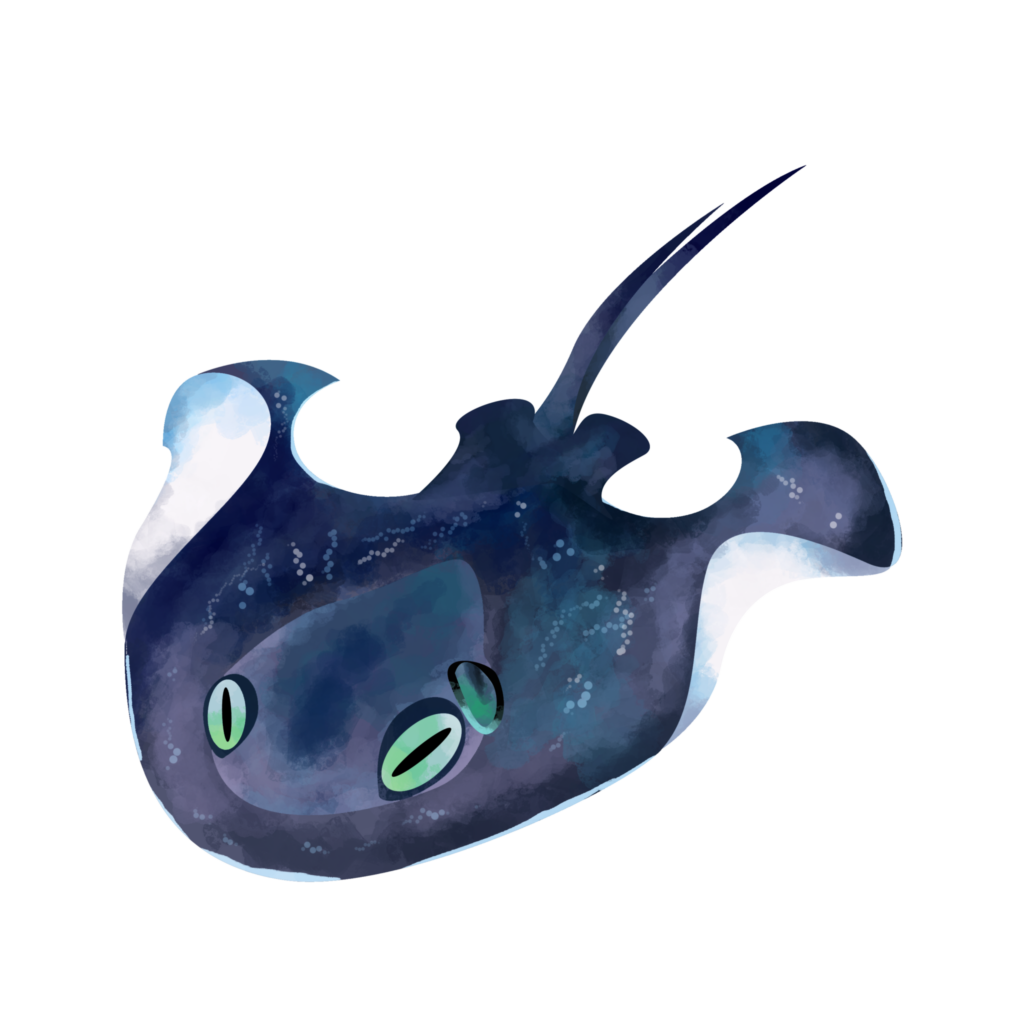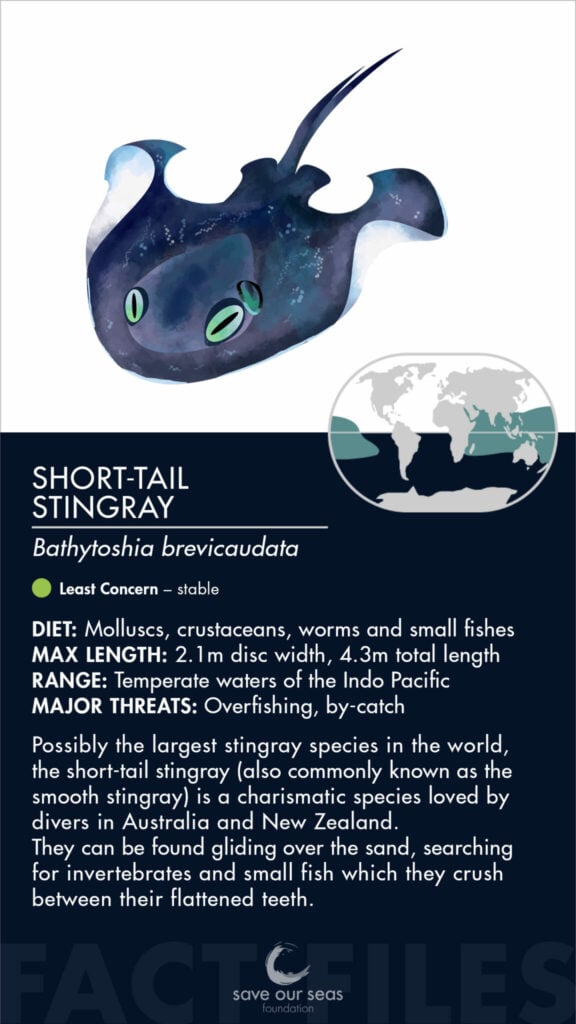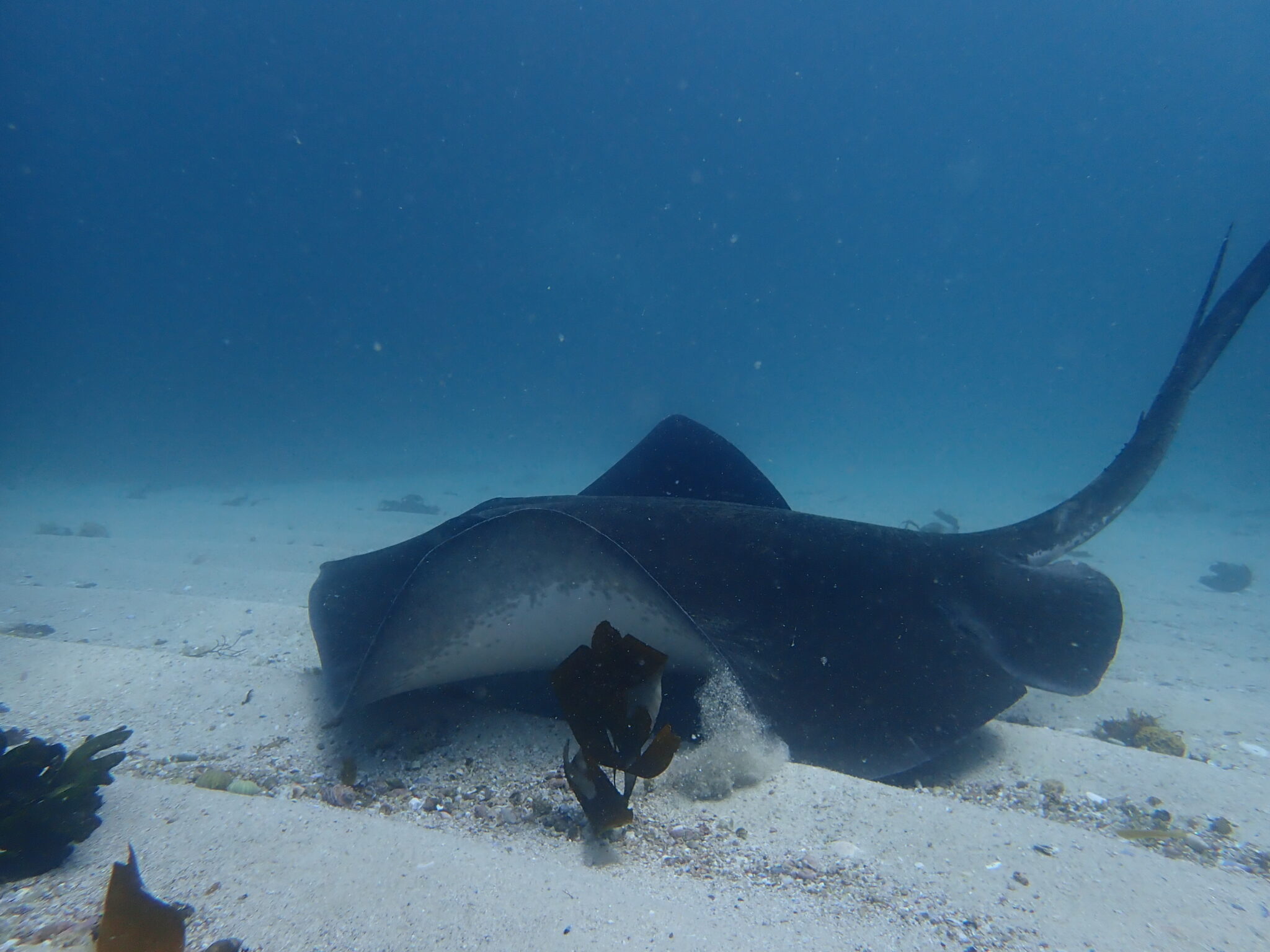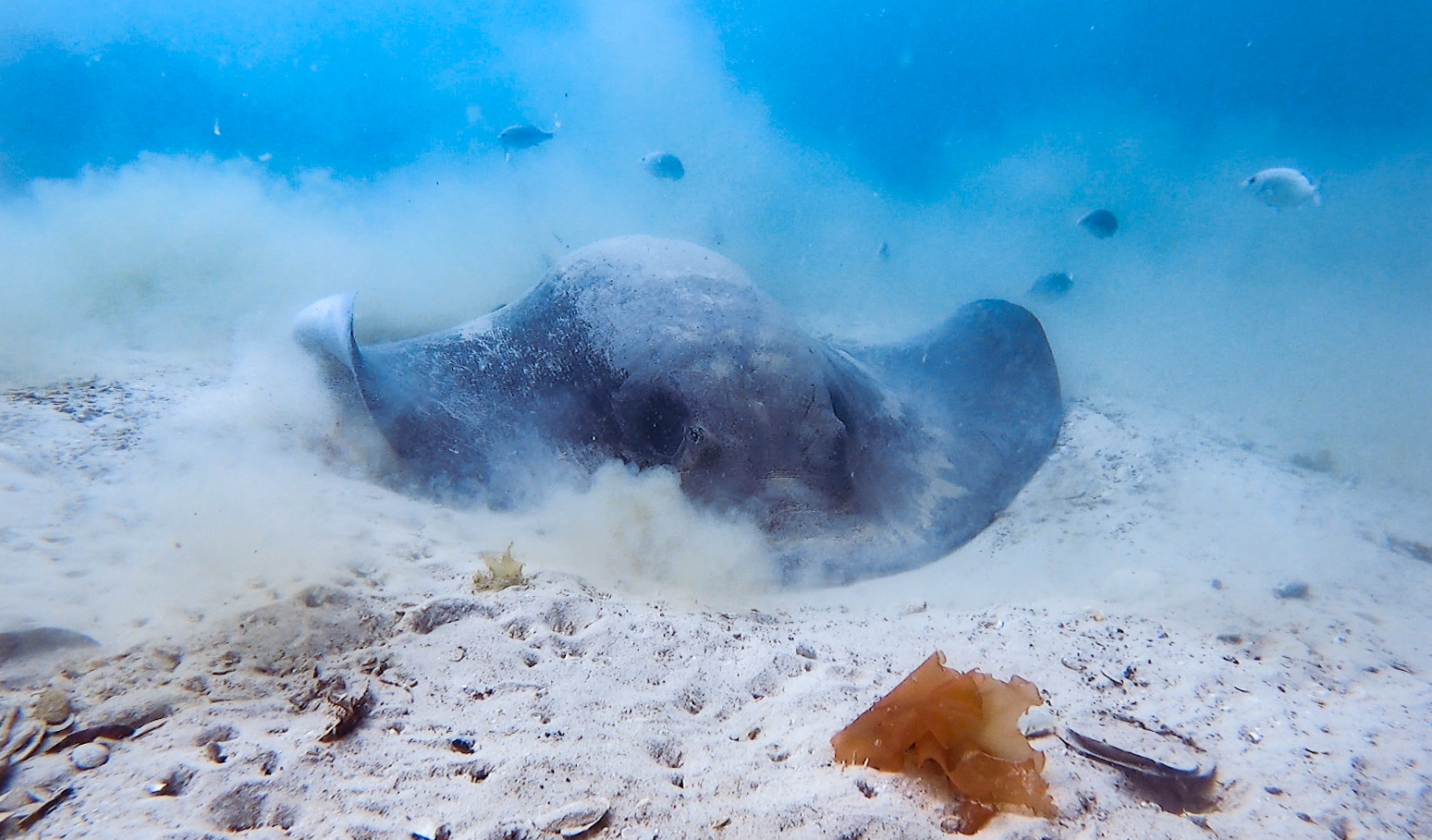Short-tail stingray
Bathytoshia brevicaudata (previously Dasyatis brevicaudata)



This large, inquisitive ray is mainly found close to the seabed scouring the sand for food, but it has been observed close to the surface. Although they are limited to the temperate waters of the Indo Pacific, they are abundant throughout their range. Considered the largest species of stingray in the world, they are also known as the giant stingray due to their enormous size – they can reach lengths of up to 4.3 metres!

Identification
Large, diamond-shaped body with a blunt, angular snout. The tail is stocky with two stinging barbs, and is shorter than the total length of the stingray as an adult. Short-tail stingrays range from grey-brown to bluish grey, with a white or pale underside. They also have small, pale-blue spots at the base of each pectoral fin.
Special Behaviour
Seasonal aggregations of short-tail stingrays occur in Poor Knights Islands Marine Reserve, in New Zealand, and Hamelin Bay, Western Australia. These aggregations are popular with divers, and are thought to be linked to mating or pupping.
Reproduction
Short-tail stingrays are ovoviviparous (or aplacental viviparous) meaning that eggs are incubated and hatched inside the mother, and the young are born live. The young are first nourished by the yolk sac, followed by uterine milk once they have hatched. Short-tail stingrays can have 6 to 10 pups in a litter.
Habitat & geographical range
Short-tail stingrays occur in both brackish and marine waters, and are found in a huge variety of habitats from shallow bays and estuaries, to rocky reefs, offshore islands and the open seabed. They occur from the surface to depths of around 480 m on the continental shelf and slope. Short-tail stingrays are distributed throughout temperate waters of the Indo Pacific, including South Africa, southern Australia, New Zealand, Japan and eastern Russia.

Diet description
Short-tail stingrays feed on a variety of animals buried in the sand, including small fishes, worms, crustaceans and molluscs (mainly squid and bivalves).
Threats
Short-tail stingrays are a popular gamefish, and are fished recreationally as well as commercially. They are also caught as by-catch in inshore trawls, seines, purse seines and longlines. Short-tail stingrays are sometimes retained as an aquarium species, and aggregations of the stingrays attract large numbers of tourists.
Relationship with humans
Short-tail stingrays can sting, as the name suggests. But incidents are rare, and only occur when a ray is threatened or startled. They are typically an inquisitive species, and are popular with divers and tourists.
Conservation
Although their population is considered stable, the short-tail stingray’s popularity as a gamefish is considered in some regions as a significant threat. In Western Australia for example, short-tail stingrays are protected from recreational fishing in the west and south coast bioregions and can no longer be retained in other areas. In South Africa, recreational anglers are restricted to one chondrichthyan species per day. They are also a prohibited species in parts of New Zealand that represent their core distribution.
Fun Facts
Short-tail stingrays are typically a slow-moving species, but if threatened they can move their pectoral fins so quickly that it creates a shockwave! This behaviour is known as cavitation.
Off the coast of New Zealand, these giant stingrays can provide a tasty meal for an orca…
The species name, brevicaudata, comes from the Latin ‘brevis’, meaning short, and ‘cauda’, meaning tail. It’s easy to see where the common name came from!
References
IUCN Red List. Smooth stingray Bathytoshia brevicaudata
Last. 2016. Rays of the World.
Florida Museum. Short-tail stingray





